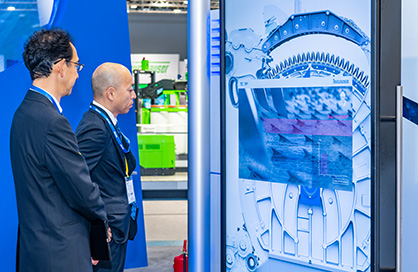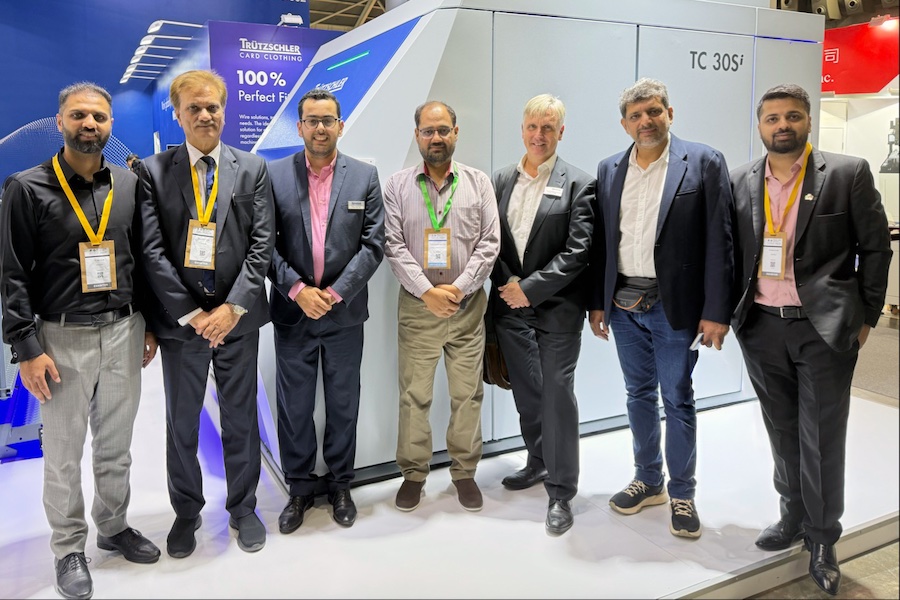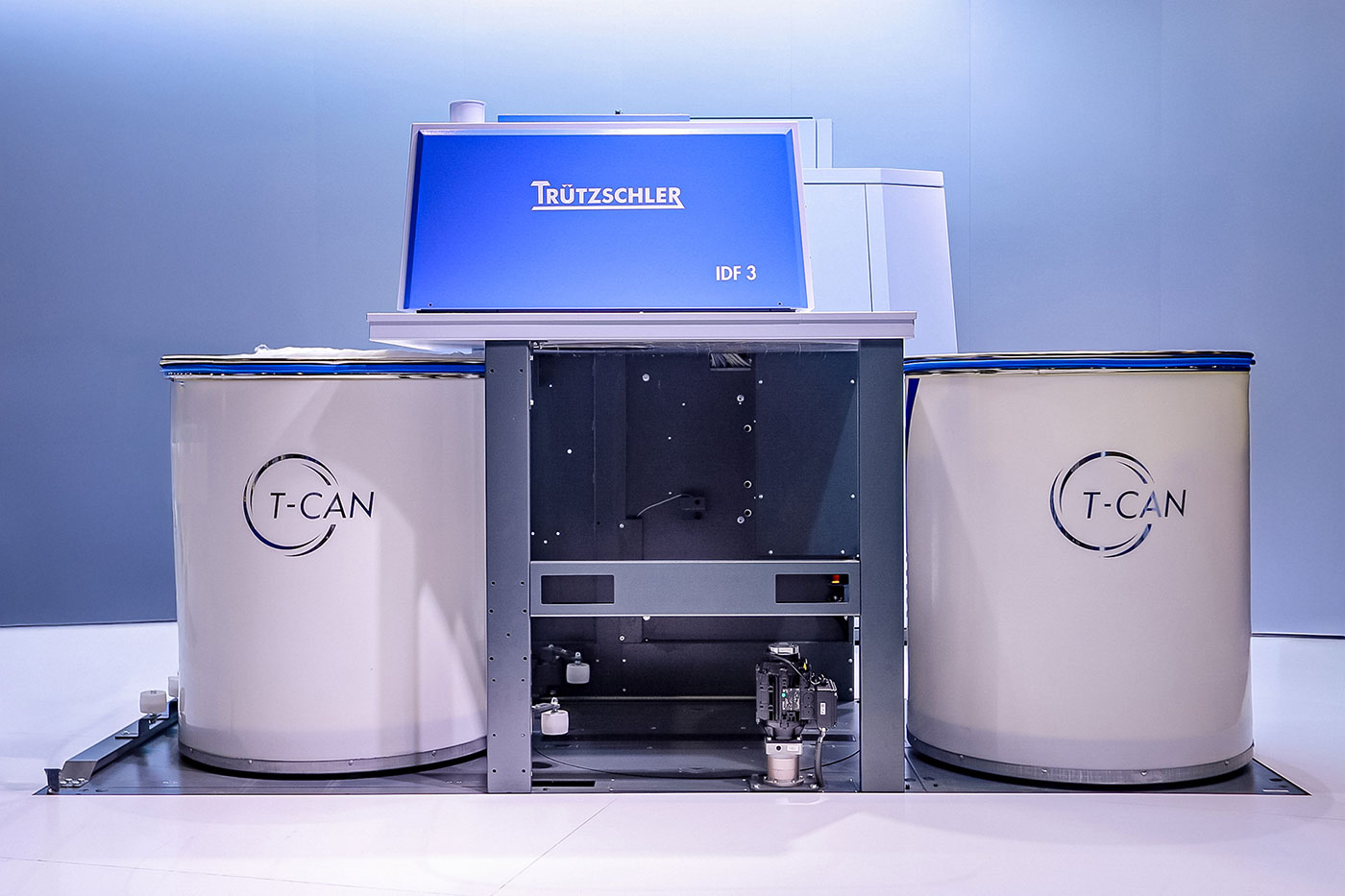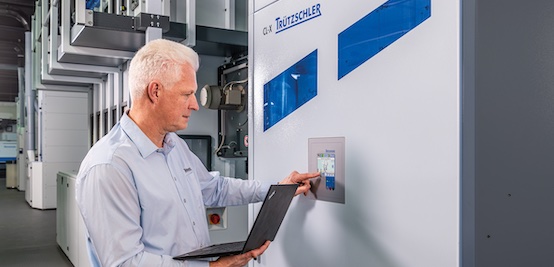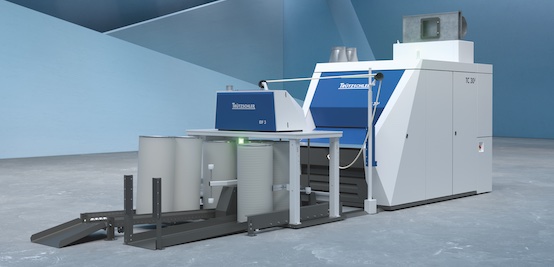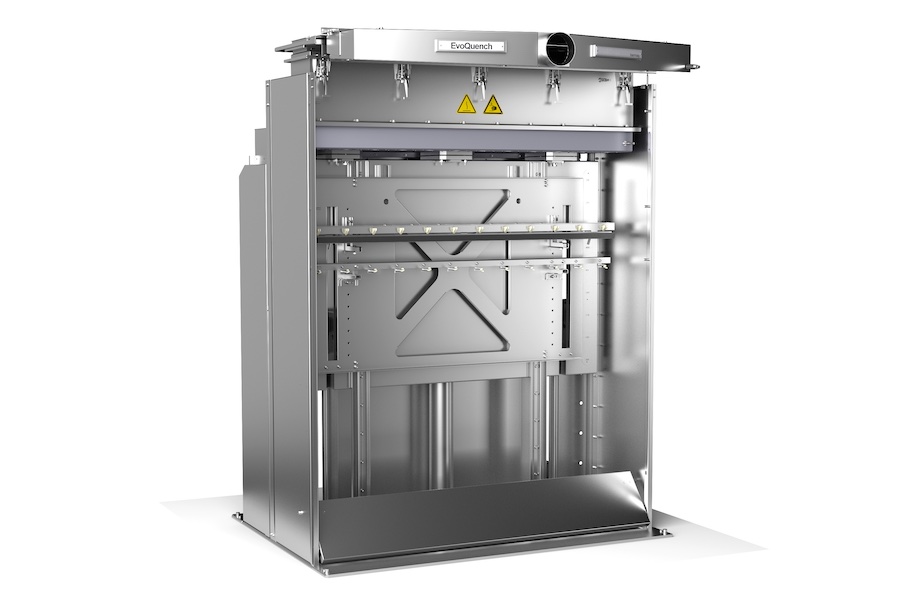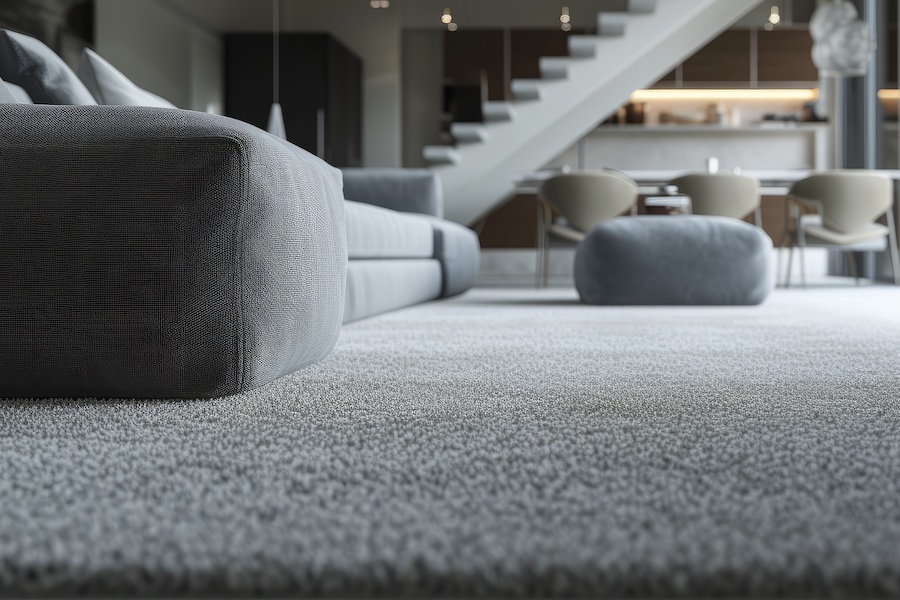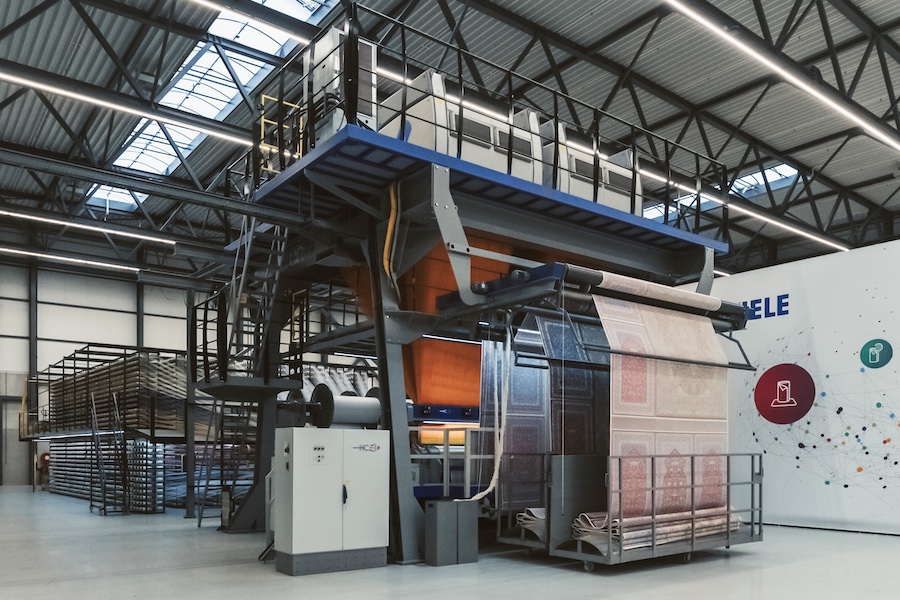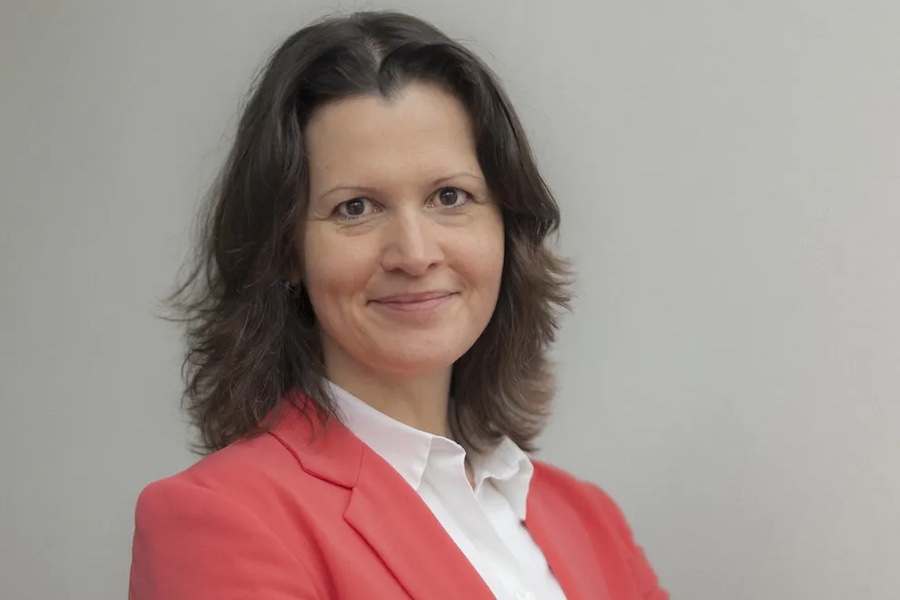#Spinning
The Truetzschler Card TC 19i: The first intelligent card

The fact that Truetzschler has the technical competence to implement these requirements was demonstrated once again at ITMA 2019. A new chapter in card development has been be opened: The Truetzschler card is intelligent. It performs important settings completely independently and with a precision not achievable by humans, which results in an unprecedented level of quality.
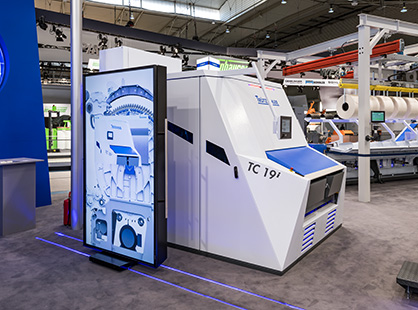
“This is the future!” and “This is the development we need!” were the reactions of booth visitors which sales manager Ralf Müller experienced at this year’s ITMA. “The possibility to increase quality and productivity as well as solving personnel issues through features like T-GO or WASTECONTROL fascinated our customers”, he summarized the visitor' s interests.
TC 19i main features at a glance:
- Self-optimizing precision
For cotton carding, the carding gap between the cylinder and flat clothing should be as small as possible. The optimum gap is 3/1000” (0.075mm) for many types of cotton. For comparison: Not even a sheet of paper fits inbetween. Even an experienced technologist cannot carry out such narrow settings when the card is cold. During operation, centrifugal forces and temperature increases influence these settings significantly.
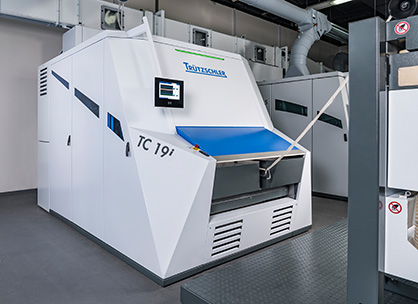
On the Truetzschler Card TC 19i with the Gap Optimizer T-GO, a basic flat setting is only carried out once by our specialists. Afterwards, T-GO ensures an ideal carding gap at all times, whether the card is cold or warm, after clothing grinding, even after clothing replacement. This is a permanent, self-optimizing, intelligent process that takes place without any production interruption. It responds automatically to changing parameters such as:
- Material properties
- Production level
- Cylinder speed
- Environmental influences such as room temperature
- Maximum raw material utilization
:UL
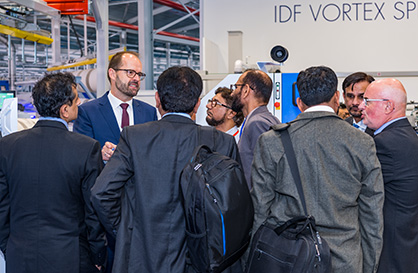
The key to the profitability of a spinning mill is the maximum utilization of the raw material. On TC 19i, an optical sensor monitors the waste in the suction, thus providing the data for WASTECONTROL. If too many good fibers end up in the waste, the system adjusts the mote knife setting on the WEBFEED via a servomotor.
- Permanent quality control
The Truetzschler Nep Sensor NCT (separat option) permanently monitors the web on the doffer. A camera registers and distinguishes neps, trash particles and seed coat fragments. The data is displayed on the screen of the cards and also transmitted to the Truetzschler mill monitoring system My Mill. In this way, multiple cards can be monitored regarding quality delivery, and any deviation will immediately be recognized.
- Smart and easy operation
The TC 19i provides a multitouch screen that can be used as easily and intuitively as a smartphone. Individual operator recognition and authorization is possible through an RFID chip. In addition, the remote card display T-LED visualizes important machine information in an easy way and helps operators to stay aware of each machine’s status.
Jürgen März, carding specialist at Truetzschler, received a lot of positive feedback at ITMA: “By talking to our customers about problems in their mills, we learned about their dependence on skilled staff. The precision of the flat setting is highly influenced by the operator, but reliable and well-trained personnel is difficult to find today. Customers were very impressed by the fact that very narrow settings can be set completely independent. The carding gap is no longer set by a technician, but by an intelligent system. The limitations of human precision have been overcome by Truetzschler machinery at this point.”
